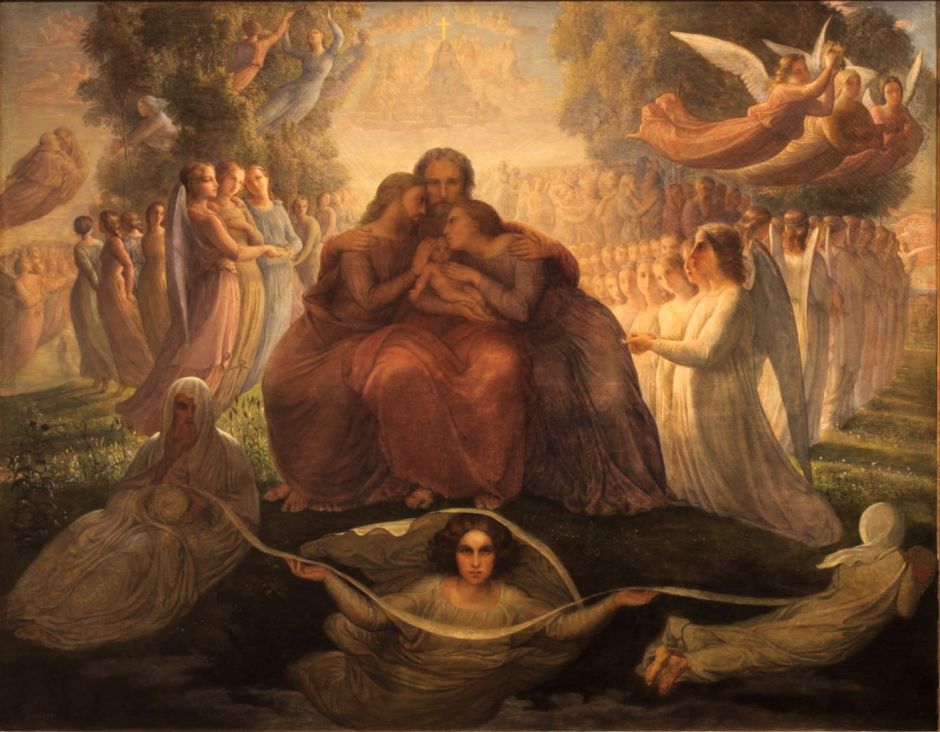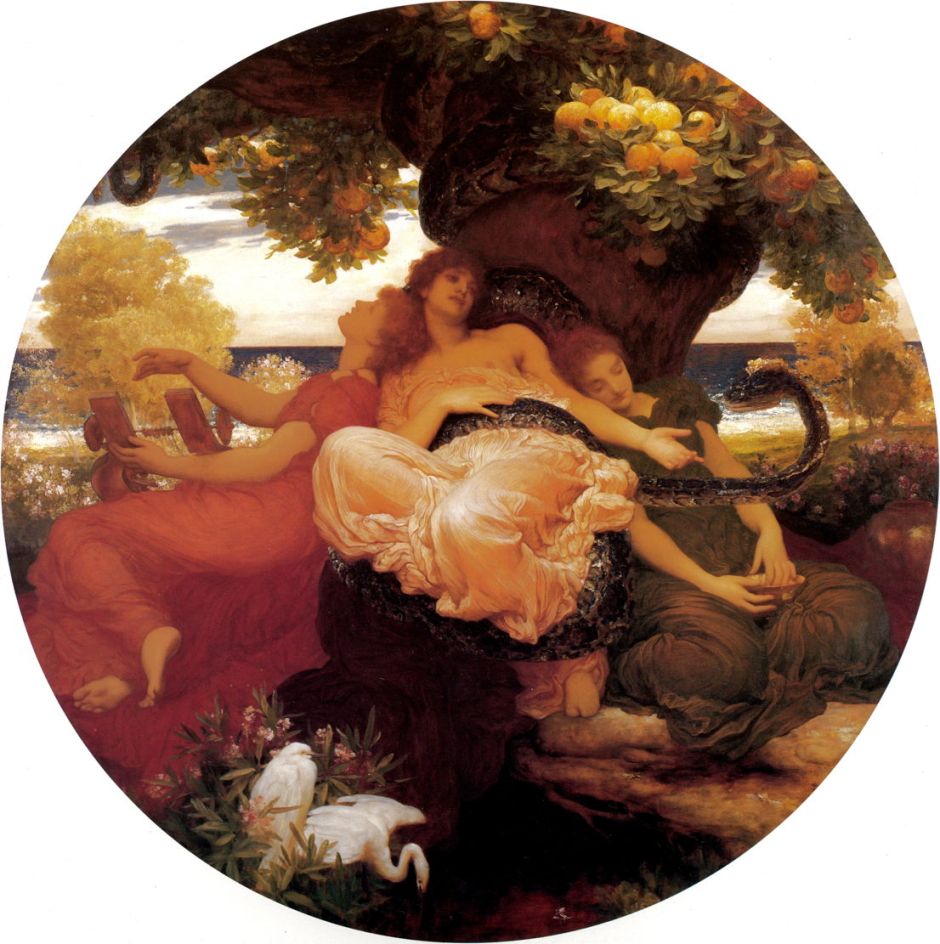Yesterday, we escaped on our weekend exploring legendary lands with the aid of paintings and Umberto Eco’s eclectic Book of Legendary Lands (2013). Having visited classical places such as Parnassus, and those imagined in Renaissance literature such as Dante’s Divine Comedy and Ariosto’s Orlando Furioso, we’ve reached the nineteenth century, and the worlds invented by the sadly short-lived American landscape artist Thomas Cole.
He painted two well-known series, the first tracing the rise and downfall of a classical empire, the second the stages of life.

The Consummation of Empire shows the complete transformation brought by civilisation in his Course of Empire.
It’s noon on a fine summer’s day. The banks of a river are filled with majestic buildings in marble in classical Roman style, with many colonnades. Their steps descend to the water’s edge, where there are small sailing boats and throngs of people. The inhabitants appear opulent, wearing toga-like dress, feasting and feting throughout the city. Large golden statues are decorated with fine textiles, there are exuberant fountains and potted plants. In the distance terraces above the buildings contain further trees and plants. Smoke rises from chimneys of a prominent building at the left, which is presumably an analogue for a previous stone circle as a place of worship.

In Cole’s Youth, the hero of his Voyage of Life series is a young man who has taken the helm of a boat, leaving his guardian angel on the bank. The morning light is bright, and the weather fair. The young man is navigating the boat along the river, through lush waterside meadows and avenues, towards a distant vision of a celestial temple. In the background on the right are coastal cliffs, and in the centre distance is a rocky mountain spire.
During the nineteenth century, Renaissance literature became popular again, to the point where scenes from Torquato Tasso’s epic about the First Crusade, Jerusalem Delivered, came to decorate a wide range of products.

This exquisite wallpaper designed by Édouard Muller in 1854 is now in the Philadelphia Museum of Art. Other smaller images appeared on coffee cups and much else from the same period.
In Tasso’s epic, Armida is a ‘Saracen’ sorceress and seductress who abucts the Christian knight Rinaldo to her enchanted garden, where she holds him captive to prevent him from bringing Christian forces success in their siege of Jerusalem. Tasso gives a brief description of the garden, with its figs, apples and grape vines. Birds sing, and the wind murmurs softly. One bird speaks to two knights sent on a mission to recover Rinaldo, telling of the chaste and modest rose flower which springs virgin from its green leaves.

Like Thomas Cole, Louis Janmot painted the stages of life in one of the most ambitious series of all, Poem of the Soul.
This opens in heaven, with the mystical formation of a human soul, shown in symbolic form as a baby. This takes place under the watch of the Holy Trinity, although the three figures surrounding the newborn soul include a woman who represents love. Around this tight group are seemingly endless ranks of angels. As is so frequent in Christian images, Paradise is less a location than an assembly.
The nineteenth century also brought lands drawn from local legend, in my next example from the Breton people, painted by Évariste Luminais.

Gradlon the Great (Gradlon Meur or Mawr) was ‘king’ of Cornouaille, in the south-west of the Brittany peninsula, during the fifth century, where he was associated with the story of the submerged city of Ys.
Gradlon fell in love with Malgven, the Queen of the North, and the pair killed her husband, the King of the North. She bore him a daughter, Dahut, who was possessed by a half-fairy, half-woman who had been rejected by Gradlon in the past. Dahut turned the city of Ys into a place of sin and debauchery. However, it was below sea level, and relied on walls and a sea gate to keep the waters out.
One night, when she was drunk, Dahut stole the key to the sea gate from her sleeping father, and opened the gate up, flooding the city. Gradlon woke up and rescued Dahut on his enchanted horse, but her sins kept dragging them back into the sea. Eventually Saint Guénolé (Gwendole or Winwaloe) pushed Dahut into the waves, which were immediately calmed. She was engulfed by the sea, and became the Breton equivalent of a siren.
Flight of King Gradlon (1884), now at Quimper, is a superb narrative painting which shows Luminais’ skill at painting horses, as well as capturing motion frozen almost photographically. Gradlon is shown thrusting Dahut away from him, as his horse rears up to help shed its burden.
For one of his most elaborate legendary lands, Gustave Moreau turned to Alexander the Great’s exploits in the Indian subcontinent.

The Triumph of Alexander the Great (c 1873-90) is a magnificent oil painting showing Alexander, dressed in white, sat high on his throne in the foreground. Around him is an extraordinary imagined landscape with imposing buildings forming a gorge, and a stack of grand buildings, towers, and other monumental structures further back. These are set at the foot of a massive rock pinnacle.
Having conquered the Persian Empire (Achaemenid Empire), in the late spring of 327 BCE, Alexander the Great set his sights on the Indian subcontinent. When he crossed the River Indus and started to campaign in the Punjab, he met determined opposition in the army of King Raja Purushottama, known in the classical literature as King Poros (or Porus).
Alexander fought his last major battle against Poros on the Hydaspes (Jhelum) River, near Bhera, and his own horse Bucephalus was killed during the intense fighting in the summer of 326 BCE. King Poros so impressed Alexander that he made him an ally. Afterwards, Alexander founded Alexandria Nikaia (meaning victory), and his army later revolted near the Ganges River, stopping any further advance into India. Three years later, Alexander the Great died.
Moreau drew on a wide variety of sources for this most elaborate of Indian fantasy cityscapes: miniature paintings of south India, photographs by English travellers, several illustrated books, and Le Magasin Pittoresque, a contemporary illustrated magazine. Geneviève Lacambre has identified a borrowed image of a Jain saint from Karnataka (Mysore), India, for example.
Classical legend remained popular, in ever more imaginative treatments.

Frederic, Lord Leighton incorporated an enormous python in his vision of The Garden of the Hesperides from about 1892. There are also two white egrets in the foreground, at the feet of the three languid young women, and a rich crop of golden apples in the tree above them.

Unicorns continue to appear in modern paintings of fantasy worlds, such as those of the American artist Arthur Bowen Davies. This is probably his most famous painting, Unicorns (Legend—Sea Calm), which he completed in 1906. It appears strongly influenced by the European Symbolist movement of the late nineteenth century.
Even Pierre Bonnard was taken on the occasional flight to legendary lands.

Bonnard’s Earthly Paradise is a pastoral fantasy from about 1915 of a grand old tree which has grown out like a huge cabbage. Perched on a branch is a brilliant red and green bird, looking as if it has come from the Amazon rather than northern France. Under its canopy are two nudes: one on the left has long golden hair and appears to be Eve. She is about to pick an apple, and a serpent-like creature is watching her. The woman on the right, who more closely resembles the artist’s partner Marthe, is lying on her right side, her head propped against her right arm, apparently asleep.
The twentieth century saw fantasy art develop as a genre in its own right. One of its pioneers was the Austrian former scenery painter Georg Janny.

Even the seabirds in Janny’s Sirens Bathing by the Sea (1922) appear to be from another world.
The most enigmatic legendary lands are those depicted by Surrealists like Paul Nash.

Nash’s Landscape from a Dream (1936-38) was apparently inspired by Freud’s theories of the significance of dreams as reflections of the unconscious. The artist locates this collection of incongruous objects on the Dorset coast, a landscape which he associated with the praeternatural. Dominating the scene is a large framed planar mirror, almost parallel with the picture plane.
Stood at the right end of the mirror is a hawk, which is staring at its own reflection, which Nash explained is a symbol of the material world. To the left, the mirror reflects several floating spheres, which refer to the soul. The reflection shows that behind the viewer, a red sun is setting in a red sky, with another hawk flying high, and away from the scene.
To the right of the hawk is a five-panelled screen which is made of glass, through which the coastal landscape can be seen: it is a screen which does not screen.
It’s at this point that we had best return to our real world. I hope you’ve enjoyed this weekend’s escape as much as I have.

